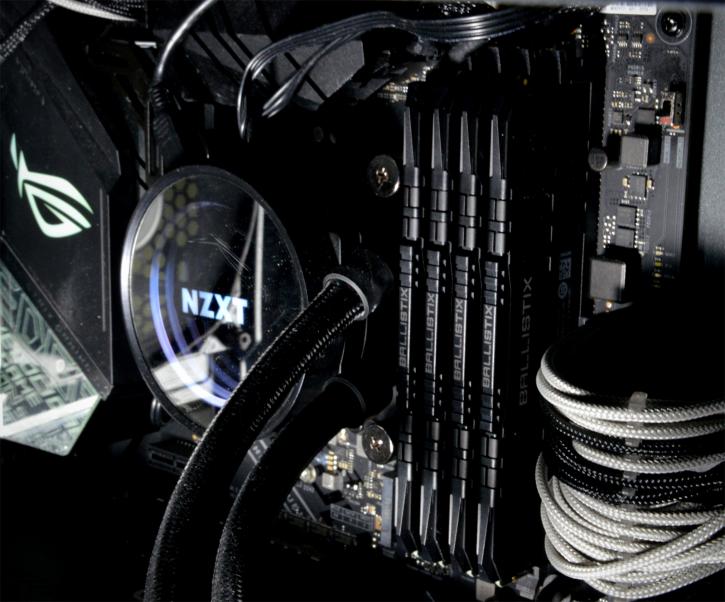Final Words & Conclusion
Final Words & Conclusion
The Crucial Ballistix Gaming product that we got for this review is a RAM kit without RGB lighting, but there’s also a version with that feature (and some of you really love the “bling”). The heat spreader is available in three colours (black/white/red), and the PCB is black, so it looks really good. You should find a fit for basically any PC build. The range of available frequencies is very broad. The slowest module operates at 2400 MHz (available only with a black radiator), and the fastest one reaches 3600 MHz at CL16 (we got the 3200 CL16 version here). If you still want more, you can always reach for the Ballistix Max series, where it’s possible to have up to 4400 MHz out of the box.
Aesthetics
Crucial has made the Ballistix Gaming a minimalistic kit, which is good. The matte, powder-coated radiator serves its purpose well, and there’s no reason to complain.
Tweaking
The memory chips used here are the E-Die by Micron (which is not surprising). We achieved a nice 3600 MHz at CL15 and 1.40 V (1.35 V is the baseline value) for AMD and 3800 MHz at CL16 and 1.45 V (1.35 V default) for Intel. You can always try to lower the latencies and go even higher with the frequency, but the best results are achieved by tweaking the frequency while keeping the latency as low as possible.
Gaming performance
That's a 1920x1080 (Full HD) gaming chart based on the GeForce RTX 2080 Ti. You can see the differences between the 8 core CPUs from AMD and Intel and what improvement you can achieve after overclocking the memory on each system. Is it worth it? It's your call (but you need to remember the OC is free and only need some time to set/test the stability).
Conclusion
Crucial Ballistix Gaming provides a default frequency (3200 MHz) that will be enough for most users, and the XMP 2.0 profile makes life easier. If you want more, you can try to overclock the memory even further. With the reviewed kit, on X470 and Z390 platforms, it was possible to achieve 3600MHz at CL15 and 3800 MHz at CL16 respectively. It’s a very good result, but we expected such overclocking headroom based on our previous experiences with the Micron E-die. You need to remember, though, that reproducibility is never guaranteed, and your results may vary. The heat spreader is a low-profile one (38.4 mm), so you shouldn’t encounter any clearance problems. The four 16 GB modules provided Chrome-friendly experience (couldn’t resist that one. On a more serious note, video editors and heavy users should be very satisfied. Even the 32 GB option is a lot for most users. The price for 2 x 16 GB is 159.99 USD which is not the best (cheapest) offer on the market, but you get nice overclocking potential here. Especially Ryzen fans, who usually dig deeper into the timings, should be happy with that kit. We can give Crucial a “Guru3D recommended” award for this sleek and speedy (and low-profile radiator) kit (we the reviewed 3200 MHZ variant, but it’s possible to squeeze much more out of it).
- Sign up to receive a notification when we publish a new article
- Or go back to Guru3D's front page



